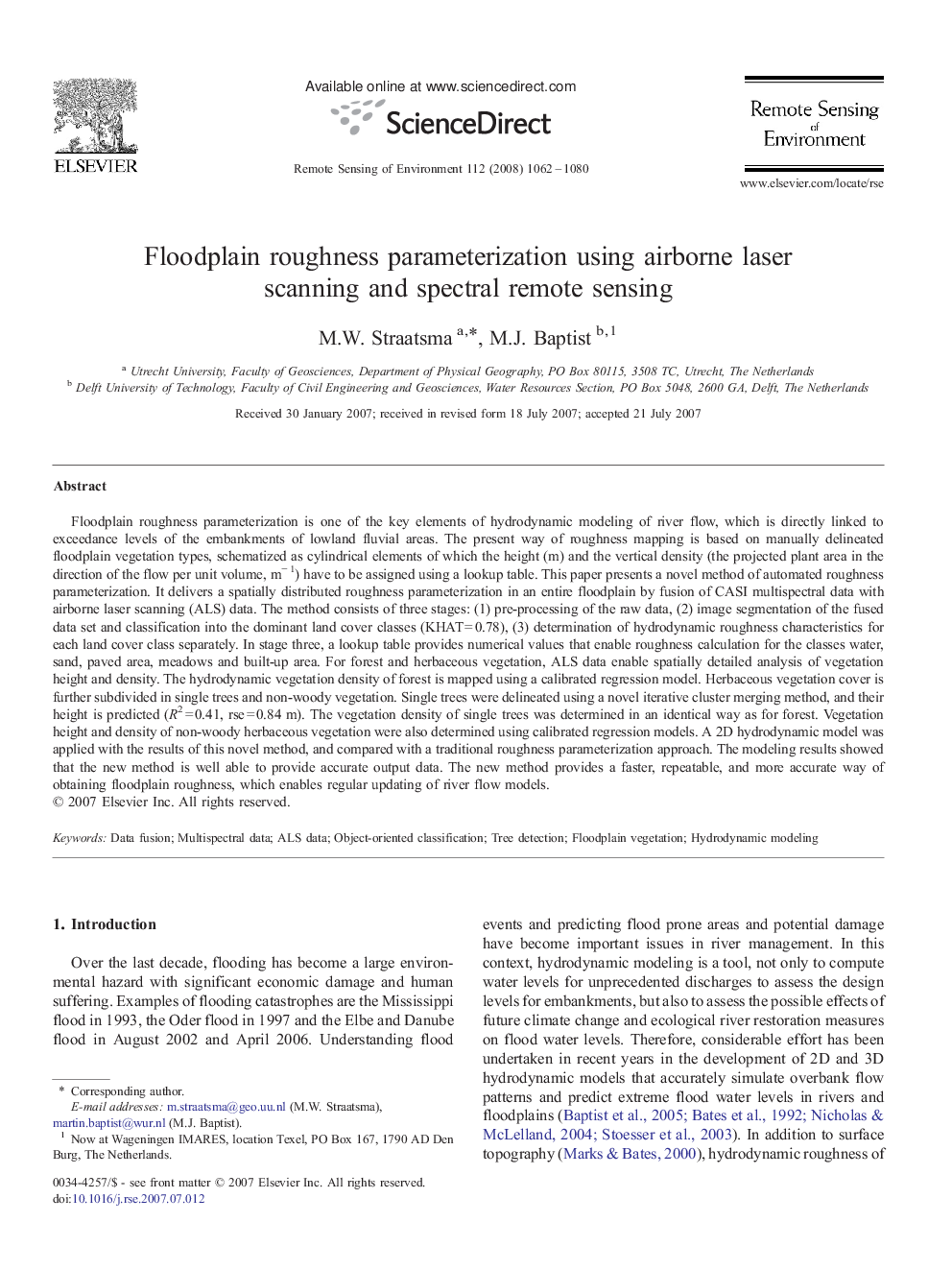| Article ID | Journal | Published Year | Pages | File Type |
|---|---|---|---|---|
| 4460470 | Remote Sensing of Environment | 2008 | 19 Pages |
Floodplain roughness parameterization is one of the key elements of hydrodynamic modeling of river flow, which is directly linked to exceedance levels of the embankments of lowland fluvial areas. The present way of roughness mapping is based on manually delineated floodplain vegetation types, schematized as cylindrical elements of which the height (m) and the vertical density (the projected plant area in the direction of the flow per unit volume, m− 1) have to be assigned using a lookup table. This paper presents a novel method of automated roughness parameterization. It delivers a spatially distributed roughness parameterization in an entire floodplain by fusion of CASI multispectral data with airborne laser scanning (ALS) data. The method consists of three stages: (1) pre-processing of the raw data, (2) image segmentation of the fused data set and classification into the dominant land cover classes (KHAT = 0.78), (3) determination of hydrodynamic roughness characteristics for each land cover class separately. In stage three, a lookup table provides numerical values that enable roughness calculation for the classes water, sand, paved area, meadows and built-up area. For forest and herbaceous vegetation, ALS data enable spatially detailed analysis of vegetation height and density. The hydrodynamic vegetation density of forest is mapped using a calibrated regression model. Herbaceous vegetation cover is further subdivided in single trees and non-woody vegetation. Single trees were delineated using a novel iterative cluster merging method, and their height is predicted (R2 = 0.41, rse = 0.84 m). The vegetation density of single trees was determined in an identical way as for forest. Vegetation height and density of non-woody herbaceous vegetation were also determined using calibrated regression models. A 2D hydrodynamic model was applied with the results of this novel method, and compared with a traditional roughness parameterization approach. The modeling results showed that the new method is well able to provide accurate output data. The new method provides a faster, repeatable, and more accurate way of obtaining floodplain roughness, which enables regular updating of river flow models.
